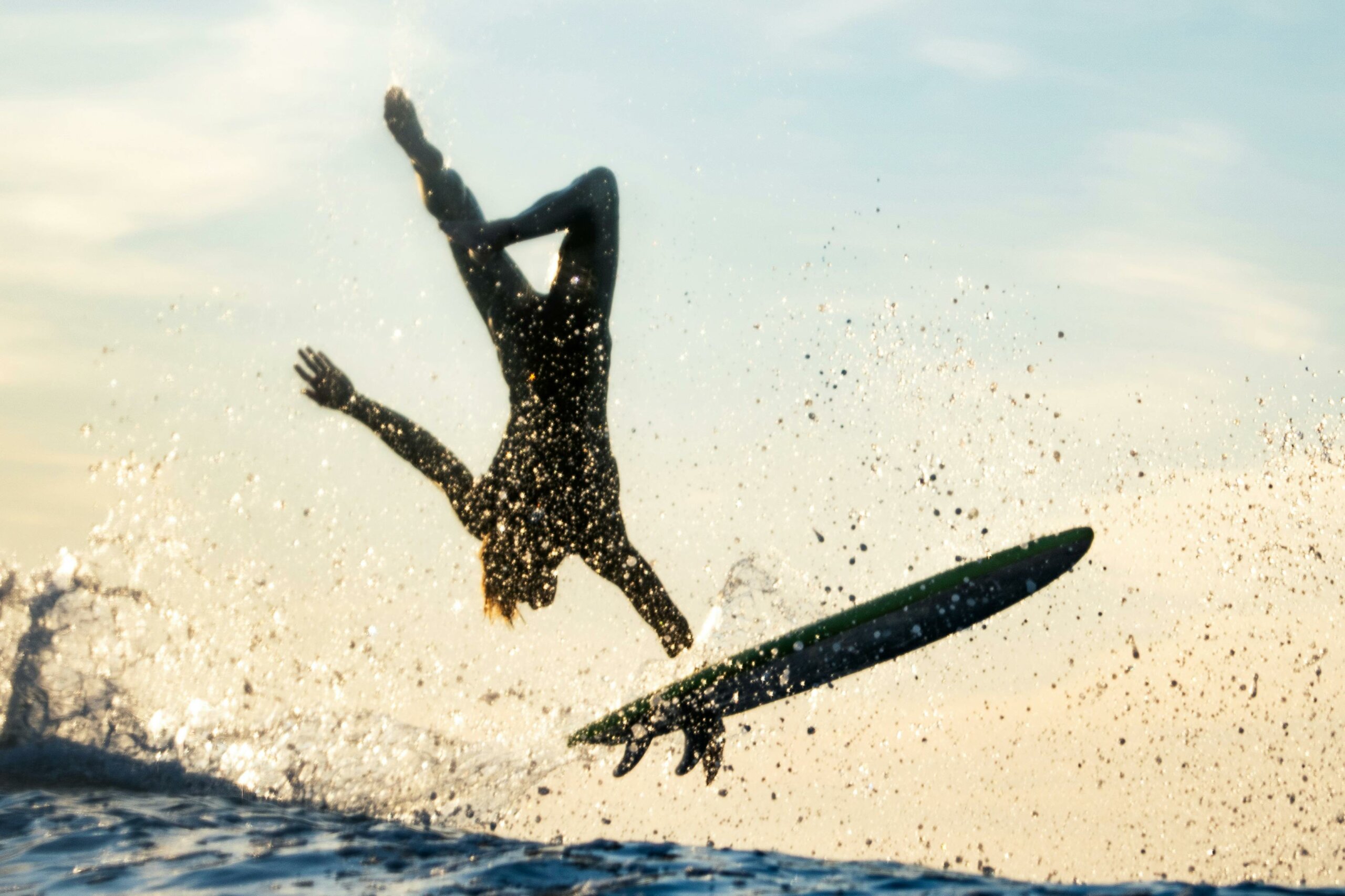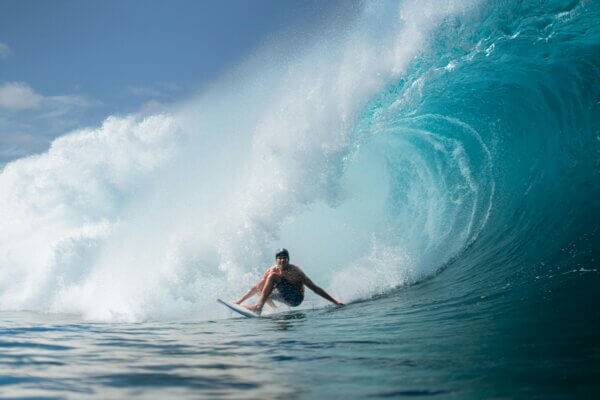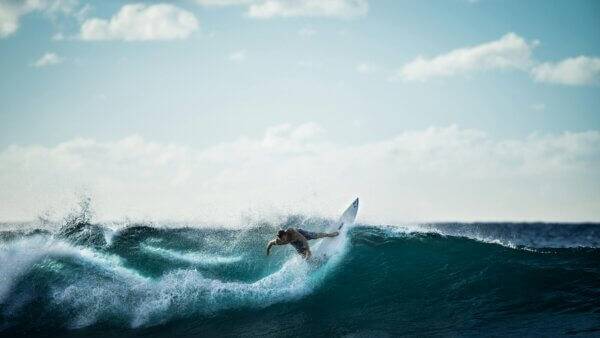
24 Feb Riding the Genetic Wave: How the “Adventure Gene” Makes Surfers Chase the Swell (Part 2)
Ever wonder why some people are content binge-watching a show on the couch, while others feel an insatiable pull to chase waves, leap off cliffs, or ride motorcycles at breakneck speeds? Science may have an answer: the DRD4 gene—better known as the “Adventure Gene.” If you’re a surfer or feel the irresistible urge to paddle into the unknown, you just might have a genetic edge that makes you wired for the thrill of the ride.
The DRD4 Gene: Nature’s Adrenaline Button
The DRD4 (Dopamine Receptor D4) gene is responsible for regulating dopamine, the brain’s pleasure chemical. Certain variations of this gene, particularly the 7R variant, are linked to heightened novelty-seeking behavior, risk-taking tendencies, and a love for adventure. In simple terms, if you have this genetic makeup, you’re more likely to crave new experiences, seek out high-risk activities, and get a bigger dopamine rush from thrilling pursuits—like surfing.
For those carrying this “adventure gene,” the idea of paddling into big, unpredictable waves isn’t terrifying—it’s exhilarating. Where others see danger, DRD4 surfers see an opportunity to push limits, feel alive, and ride the chaos. It’s no surprise that some of the greatest surfers in history—think Laird Hamilton, Kelly Slater, and Maya Gabeira—exhibit a near-superhuman ability to embrace risk and thrive under extreme conditions.

Surfing & The Dopamine High: The Science of Stoke
Surfing is more than just a sport; it’s a symphony of nature, physics, and human tenacity. But for those with the DRD4 gene, it’s also a dopamine factory.
When you drop into a wave, your brain releases a flood of dopamine, rewarding you with a natural high. The bigger the wave, the higher the risk, and the more intense the dopamine hit. This explains why surfers will paddle out again and again, chasing that perfect wave, regardless of wipeouts, reef cuts, or rogue sets.
While most people might shy away from the unpredictable, DRD4-dominant individuals are hardwired to crave it. The uncertainty of whether a wave will barrel or close out? Exciting. The challenge of staying upright when the ocean throws its weight at you? Thrilling. The sheer unpredictability of the entire sport? Addictive.
Adrenaline Junkies & Surfing: The Perfect Match
Surfers are, by nature, adrenaline junkies. The DRD4 gene plays a key role in this, but it’s not acting alone. Other genetic factors also contribute to the fearless nature of surfers, including:
- COMT Gene – Controls how quickly adrenaline is broken down, affecting whether someone is cool under pressure or an anxiety-ridden mess.
- MAOA (The Warrior Gene) – Linked to aggression and risk-taking behavior, often seen in extreme sports athletes.
- BDNF (Brain-Derived Neurotrophic Factor) – Enhances learning and memory, meaning surfers with this gene adapt faster and can master techniques more efficiently.
When combined with DRD4, these genes create the ultimate thrill-seeker: a person who doesn’t just enjoy risk but actually needs it to feel fulfilled. Surfing, with its ever-changing conditions, physical demands, and inherent dangers, becomes the perfect playground for those genetically wired to seek adrenaline-fueled experiences.
Born to Shred: Are Surfers Genetically Gifted?
While passion and dedication are crucial for mastering the sport, genetics may provide a head start. Some people naturally possess better balance, quicker reflexes, or faster recovery times, all of which are critical in surfing. Here’s how genetics can influence your ability to dominate the lineup:
- Muscle Composition: Those with a higher proportion of fast-twitch muscle fibers (linked to the ACTN3 gene) are better at explosive movements, perfect for quick pop-ups and powerful turns.
- Endurance & Lung Capacity: Genetic variations in the PPARA and EPAS1 genes affect oxygen efficiency, giving some surfers a natural advantage in long paddle-outs and breath-holding underwater.
- Injury Recovery: Certain genetic markers, such as those in the COL5A1 gene, influence connective tissue resilience, meaning some surfers heal faster from injuries.
Is Surfing in Your DNA?
If you’ve ever felt an unexplainable need to be in the ocean, get tossed around by waves, and come back for more, your DNA might be calling you to surf. While not everyone with the DRD4 gene ends up on a surfboard, those who do often find a lifelong obsession.
Science aside, the allure of surfing goes beyond genetic predisposition. It’s a dance with nature, a test of resilience, and a deeply personal journey. Whether your love for surfing is written in your DNA or simply developed over time, one thing is certain, once the ocean hooks you, there’s no turning back.
So, if you find yourself waking up at dawn to check the surf report, pushing through wipeouts with a grin, and feeling a primal thrill with every wave you catch, you might just be part of the DRD4 tribe. Welcome to the lineup, where science and stoke collide. Book your next surf trip now!



